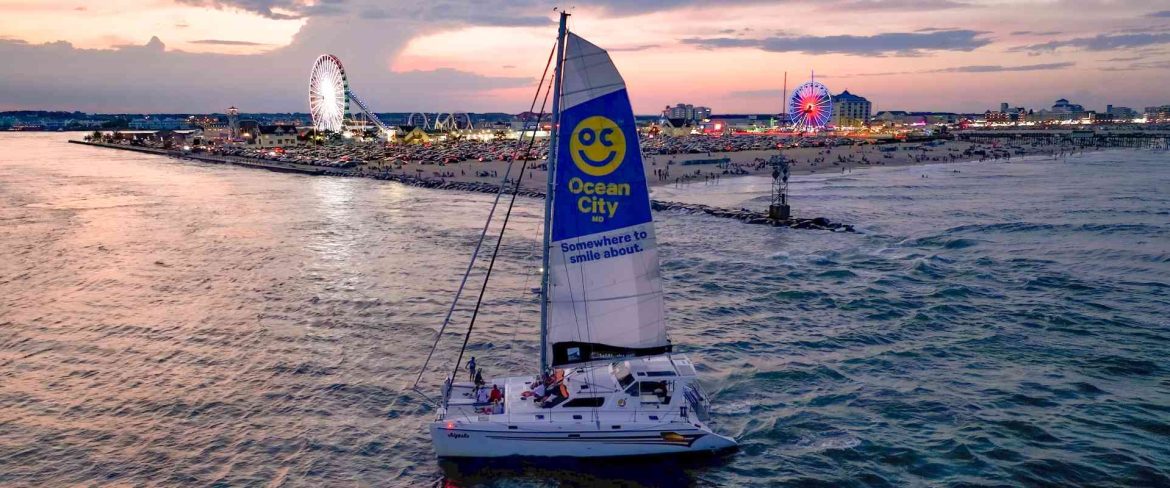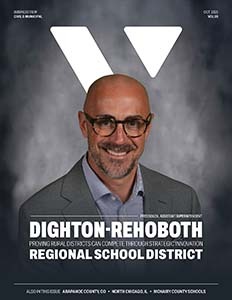A ‘Conventional’ Waterfront Strategy
Earning its title as Maryland’s premier waterfront business destination, this convention center is turning a coastal resort into year-round economic powerhouse
Picture a convention center where the back door opens to Chesapeake Bay waters and the front entrance sits just two blocks from Atlantic Ocean beaches. The Roland E. Powell Convention Center in Ocean City, Maryland, occupies this rare position, offering meeting planners something most facilities cannot: a genuine waterfront experience that doubles as both venue and destination. Named after a former Ocean City mayor, this 214,000-square-foot facility transforms into a 5,000-seat indoor arena when needed, hosting everything from corporate conventions to WWE SmackDown events.
“Our back door is to the bay and the front door is two blocks from our beach,” explains Kim Mueller, the center’s sales and marketing director. “That’s a huge highlight for this meeting space where people really feel surrounded by nature at the same time as being productive and inspired.” The facility’s 75,000 square feet of continuous exhibit space, 19 breakout rooms, and waterfront ballroom serve Ocean City’s tourism economy, which welcomes up to eight million visitors annually and transforms the city into Maryland’s second-most populated municipality during summer months.
Mueller emphasizes their operational philosophy: “We don’t say no. We figure out how to make it work.” This approach has proven effective in an industry where 78% of organizers now identify in-person events as their most impactful marketing channel. The center’s sweet spot accommodates conventions of 2,000 to 5,000 attendees, though city-wide events can reach 25,000 participants, leveraging Ocean City’s 10,000 hotel rooms and 25,000 short-term rental units to support large-scale gatherings.
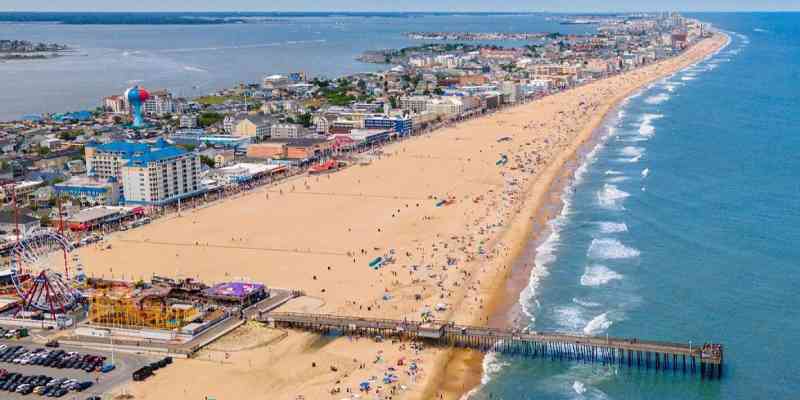
Decades of Strategic Evolution
The Roland E. Powell Convention Center’s journey from a 1970s facility with an awkward front-loading dock to today’s modern waterfront destination illustrates how strategic reinvestment can transform aging infrastructure. Jessica Waters, communications and marketing director at Town of Ocean City, Maryland, recalls the original design’s peculiarities: “When it was initially built, the loading dock was actually in the front of the building, and it had this ramp that took you up. It was the most bizarre looking thing.”
Major renovations have reshaped the facility’s functionality and appeal over decades. Waters explains how these changes enhanced their waterfront advantage: “We’ve seen some pretty significant evolutions of the space to accommodate different events and activities but also has allowed us to really take better advantage of where our location is by including this dockside gallery that we have now.” The 2012 addition of a performing arts center marked a turning point, enabling the venue to diversify beyond traditional meetings and conventions.
The most recent expansion, completed in 2022, added 30,000 square feet of meeting space and a waterfront reception area overlooking the bay. This growth compliments industry trends showing that meeting planners increasingly prioritize venues offering both functional space and destination experiences. Mueller notes the impact of continuous improvements: “In the past two years, we’ve put in over 11 million in interior renovation and updates both in technology and aesthetics.”
Tom Perlozzo, Tourism and Business Development Director, explains their modernization strategy: “We’ve moved from what I call institutional into modern day kind of look and feel. And our clients are gravitating to that.” The building’s transformation aligns with broader industry demands, as 64% of attendees now cite immersive experiences as essential event elements.
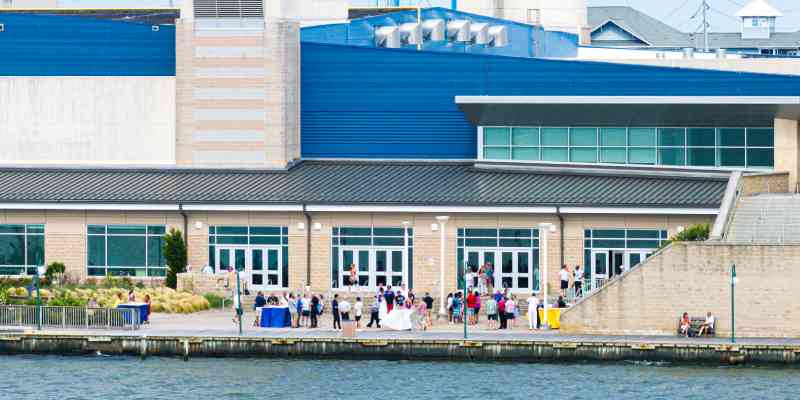
Technology Integration and Client-Focused Amenities
Modern convention centers face mounting pressure to deliver seamless technology experiences, as 73% of attendees now expect conferences to use cutting-edge tools. The Roland E. Powell Convention Center has responded with comprehensive upgrades that eliminate common client pain points around equipment costs and compatibility issues.
“Now all of our breakout rooms have dropped down screens, overhead projectors, updated audio, and the beautiful part is what we do for our clients is when they rent the room, all of that is complimentary in our rental package,” Mueller explains. This inclusive approach addresses a key industry challenge where rising event costs force planners to seek venues offering integrated solutions rather than expensive add-ons.
The center’s most significant equipment investment targets the growing sports tourism market. Mueller describes their Olympic-grade flooring purchase: “For sports in the building, we just invested in Taraflex flooring, which is the flooring that the Olympics use for volleyball. So, it’s very sought after when it comes to hosting sporting events. We’re going to be the largest covering for the Taraflex in the US.” The 75,000 square feet of specialized flooring positions Ocean City to compete for premium athletic events in a market where sports tourism continues expanding post-pandemic.
Infrastructure improvements go beyond visible technology upgrades. Perlozzo outlines recent investments: “We’ve spent well over 10 million in the past five years to improve the convention center from a number of different perspectives. New roof infrastructure wise, we did have a 50,000 square foot expansion.” These systematic improvements address the reality that many convention centers built in the 1970s require substantial modernization to meet current operational standards and client expectations.
Marketing Strategy and Building the Right Business Mix
Ocean City’s reputation as a leisure destination creates both opportunities and obstacles for convention business. While the resort welcomes eight million annual visitors, convincing corporate planners to view it as a serious meeting destination requires strategic repositioning. Ocean City searches on booking.com increased 22% year-over-year, but Mueller acknowledges the challenge: “We are such a popular destination for leisure travelers, that turning people’s thoughts to coming to Ocean City for meetings and conventions has been a little bit of a challenge for those that are not familiar with what we have to offer.”
The marketing approach emphasizes relationship building over traditional advertising channels. Waters explains their strategy: “We’ve seen the most success in just the relationship building and kind of continuing to invest in relationships with planners who have either been here or perhaps maybe don’t realize what a special hidden gem Ocean City is.” The team conducts familiarization trips, develops video testimonials, and prioritizes face-to-face interactions with potential clients.
Post-pandemic recovery has exceeded expectations across client segments. Mueller reports strong performance: “All of our existing clients and newer clients, they’re hitting their marks. We did have a little bit of downfall with some of them with the government cutbacks with grants at the beginning of the year, but they all weathered pretty well.” However, operational challenges remain focused on optimizing weekday bookings. Perlozzo identifies their primary objective: “Monday or Sunday through Thursday is really our biggest challenge along with group type and things that bring those economics here to town.”
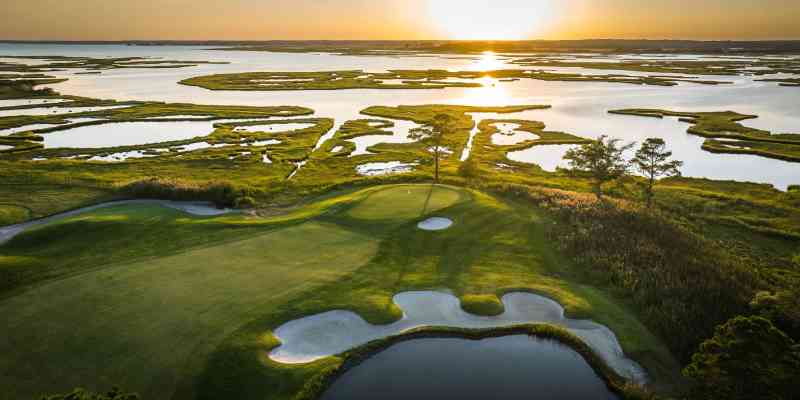
Sports Tourism Ambitions and Creative Space Maximization
Ocean City’s geography presents unique constraints for sports tourism development. Perlozzo explains the challenge: “We are a 10 square mile barrier island off Maryland’s coast, and we don’t have any physical property that could house a sports complex. So, we are very close to building a $160 million project off the island.” The proposed facility faces political complexities requiring coordination between county and municipal governments, but enjoys strong local support with the mayor and city council backing the initiative.
Current sports programming maximizes existing resources across the island. Mueller describes their creative approach: “We do take advantage of all of the venues that we have, including our beautiful beaches when it comes to sporting events. We have sand soccer, beach volleyball, and beach lacrosse. So, we’re utilizing every piece of Ocean City for the sports industry that we can.” Northside Park provides additional capacity for softball, baseball, and lacrosse tournaments, showing how destination marketing organizations can leverage natural assets when purpose-built facilities remain unavailable.
The convention center’s adaptability is far reaching. Mueller outlines their versatility: “Our expo space is used for everything from the trade show to volleyball to field hockey, so we’re putting a roller-skating rink in there and having a music festival. The sky’s the limit.” Even the waterfront ballroom transforms from formal galas to youth volleyball courts, while the 1,212-seat performing arts center accommodates keynote speakers, dance recitals, Broadway shows, and cheer events. This flexibility has generated exceptional loyalty, with Mueller reporting repeat business rates of 85 to 90 percent, significantly above industry averages.
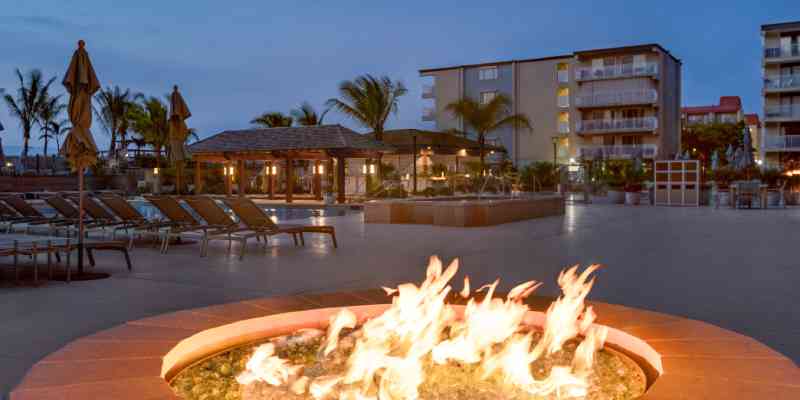
Economic Impact and Future Vision
The Roland E. Powell Convention Center is an economic catalyst for Ocean City, particularly during slower tourism periods when the resort town needs additional revenue streams. Perlozzo estimates the facility’s broad impact: “I’m guesstimating well over 500 million in economic benefits to the town.” This figure is plausible, as comparable facilities like Baltimore’s convention center generate over $273 million annually in direct and indirect spending.
Integral to its success, the convention center works very closely, and is supported by valued hospitality partners to ensure that the future continues to bring further success and increased revenue growth.
Working collaboratively with its hospitality partners is at the heart of its winning business model and leads to its creative development and tourism, hospitality-accociated growth. Perlozzo mentions key collaborations that included Ashore Resort & Beach Club, the Harrison Group, Hilton Garden Inn, Hyatt Place and the Gran Hotel Ocean Front. Ashore Resort & Beach Club
The performing arts center exemplifies how diversified programming drives year-round economic activity. Perlozzo explains the transformation: “We may have had 20 events annually, now we’re probably at 60 to 70. And off-season, when you’re having a concert or a Broadway play on a Tuesday or Wednesday night, you’re bringing 1200 people into town. They’re eating dinner. That makes an impact on small businesses here.” Ocean City’s 200 restaurants and extensive hospitality infrastructure can absorb these mid-week visitor influxes, creating measurable benefits for local stakeholders.
Ambitious expansion plans through 2027 include a 30,000-square-foot front addition and five-story parking deck, representing $60 million in capital investment. Perlozzo anticipates additional improvements totaling $2 to $4 million, including bathroom renovations and terrazzo flooring updates. The Maryland Stadium Authority’s partnership provides crucial support for these initiatives, indicating the state’s recognition of convention centers as economic development tools.
Ocean City’s convention center continues to show how coastal destinations can balance leisure tourism with serious business events. Through strategic reinvestment, creative programming, and relationship-focused marketing, the facility has established itself as a viable alternative to traditional urban venues while harnessing its unique waterfront setting as a competitive advantage.
AT A GLANCE
Name: Roland E. Powell Convention Center
What: 214,000-square-foot convention and events facility with performing arts center, serving as Ocean City’s primary meetings venue
Where: Ocean City, Maryland
PREFERRED VENDORS
Ashore Resort & Beach Club
Ashore Resort & Beach Club : https://ashoreresortoceancity.com/
Ashore Resort & Beach Club is Ocean City, Maryland’s reimagined oceanfront retreat, featuring 250 renovated guest rooms, five distinctive dining concepts, and – debuting in Spring 2026 – 40,000 square feet of fully redesigned event space. Blending contemporary coastal style with sweeping Atlantic views, Ashore offers elevated experiences for weddings, meetings, and unforgettable beach getaways year-round.
Harrison Group
Harrison Group : https://harrisongroupsales.com/
Discover Harrison Group Hotels & Restaurants in Ocean City, MD, a coastal legacy since 1951. With 14 oceanfront properties, vibrant eateries, and over 38,000 sq ft of versatile event space. we deliver unforgettable stays where waves, flavor, and warm hospitality unite. Visit HarrisonGroupHotels.com for more information.
Hilton Garden Inn
Hilton Garden Inn Ocean City Oceanfront : https://www.hilton.com/en/locations/usa/maryland/ocean-city/hilton-garden-inn/
Just steps from the boardwalk, the 170-room Hilton Garden Inn Ocean City Oceanfront offers beachfront accommodations with oceanfront balconies guaranteed in every room. Home to Coastline Creamery & Café and Solstice Bar & Grille, dine facing the Atlantic or enjoy 3,142 sq.ft. of private venue space and indoor pool.
Hyatt Place
Hyatt Place Ocean City/Oceanfront : www.Hyatt.com
Whether traveling for business or leisure, Hyatt Place Ocean City is the perfect blend of comfort and convenience. Featuring new spacious studio suites that offer fully equipped kitchenette, private balcony, sleeper sofa and two queen beds, ideal for extended stay travelers. Steps away from boardwalk, beach, restaurants, shopping and attractions.
Grand Hotel Ocean Front
Grand Hotel Ocean Front : https://grandhoteloceancity.com/
Oceanfront and on the iconic Boardwalk. Featuring 251 rooms with private balconies, five dining outlets, indoor/outdoor pools, bike rentals, and 10,000 sq. ft. of meeting space, it’s ideal for coastal escapes, leisure, and memorable meetings.
Worcester County Tourism
Worcester County Tourism : https://choosemarylandscoast.org/
Worcester County is Maryland’s only county bordering the Atlantic Ocean and is a federally designated SBA HUBZone. With three Enterprise Zones, two Arts & Entertainment districts, and Ocean City attracting 8 million visitors annually, Worcester County offers unmatched market access, incentives, and growth potential for forward-thinking business owners. Get started and learn more at www.choosemarylandscoast.org
